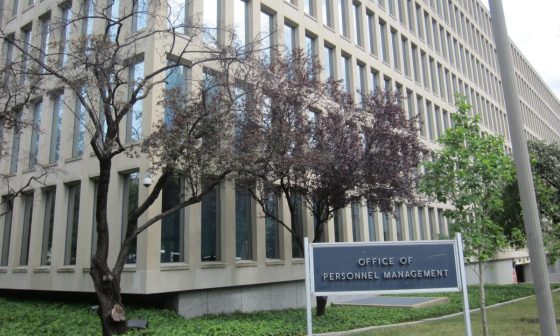The 4 federal shared services marketplaces are shaping up

All four agencies tasked with eventually operating shared services marketplaces for the federal government made progress developing them in fiscal 2020, though none are modeled exactly the same.
The Cybersecurity and Infrastructure Security Agency, Treasury Department and General Services Administration have pushed closer to offering governmentwide shared services as designated quality services management offices (QSMOs), and the Department of Health and Human Services is close to gaining recognition as an official shared service provider, leaders for each said Wednesday.
The Department of Health and Human Services expects to hear back on whether it can begin standing up a marketplace for grants management systems in the coming weeks, after presenting its implementation plan on July 31.
HHS would be the last of the four so-called QSMOs made official by the Office of Management and Budget, largely because it lacked a preexisting shared services model like the others. But HHS’s presentation was “very well received” by the Shared Services Governance Board that makes recommendations to OMB, said Alice Bettencourt, QSMO executive lead.
“While we’re awaiting formal designation, we’ve been making significant progress in understanding the existing grants management ecosystem, engaging stakeholders including federal service providers, and supporting business offices bringing quality shared services to the market to accelerate the impact once we are designated,” Bettencourt said, during the Shared Services Summit hosted by ACT-IAC and the Shared Services Leadership Coalition on Wednesday.
Eventually, agencies will be able to choose from a QSMO-designed catalog of cloud-based systems and services, offered by federal shared service providers, based on their needs
CISA became the QSMO for cybersecurity services in April, and the Treasury Department and GSA became governmentwide shared services leads for financial management and human resources services, respectively, in June. Any agency looking to upgrade its systems in those areas will be able to use the forthcoming marketplaces in lieu of finding or developing its own solutions.
CISA spent fiscal 2020 building out its QSMO while also preparing its first three services. The agency expects to award a commercial vendor the contract for a vulnerability disclosure policy (VDP) platform in the coming month, said James Sheire, QSMO branch chief.
VDP platforms input and process reports from researchers, who may have found vulnerabilities in an agency’s externally facing IT systems. What’s more, CISA partnered with GSA to acquire the platform, so both the service and the acquisition vehicle will be available to agencies through the marketplace.
CISA’s second marketplace offering is a security operations center-as-a-service (SOCaaS). The agency plans to identify commercial SOCaaS providers but, for now, is going with a federal shared service provider.
“We quickly struck up a partnership with Department of Justice, who has a great service in SOC, and offered that as SOC-as-a-service to, in particular, small agencies,” Sheire said.
The final marketplace offering is a protective Domain Name Service (DNS) for blocking access to malicious websites when translating their people-friendly domain names into the numerical Internet Protocol addresses computers use. That award to a commercial vendor will likely come next fiscal year, Sheire said.
GSA’s QSMO designation covers both payroll and leave systems, and the office is standing up a payroll community of practice while working with customer advisory boards.
A second focus area is the technical configuration and design of a minimum viable product to calculate payroll in a consistent, holistic way — dubbed the NewPay Initiative.
“This tool that we are designing covers 65 major pay plans across the federal space, which will actually help to pay about 89% of our workforce,” said Amy Haseltine, GSA’s QSMO director.
NewPay has already been tested with 12 of the pay plans and may end up incorporating the Title V or General Schedule population, Haseltine said.
The QSMO also plans to release the first governmentwide data standards for payroll and time and attendance by the end of the month, having worked on them with the Human Resources Line of Business within the Office of Personnel Management for several years.
Lastly, Haseltine’s team is focused on governance as it relates to both the governmentwide QSMO portfolio and GSA’s business lines.
Treasury is eyeing the third quarter of fiscal 2022 for the launch of its core financial management services marketplace, but that doesn’t mean it hasn’t been busy.
The OMB memo 13-08 established four legacy shared service providers for financial management that may or may not be invited into the marketplace, said Matthew Miller, deputy commissioner of the Bureau of the Fiscal Service. Additionally, several agencies had need of Treasury’s services immediately.
“A few agencies had core financial management modernization needs now,” Miller said. “They couldn’t wait for a marketplace, so the QSMO has been engaging with those agencies — namely [the departments of] Commerce, Homeland Security and OPM — to try to help advise and inform, figure out how they can build standards into their approaches and be aligned for future marketplace adoption further down the road.”






